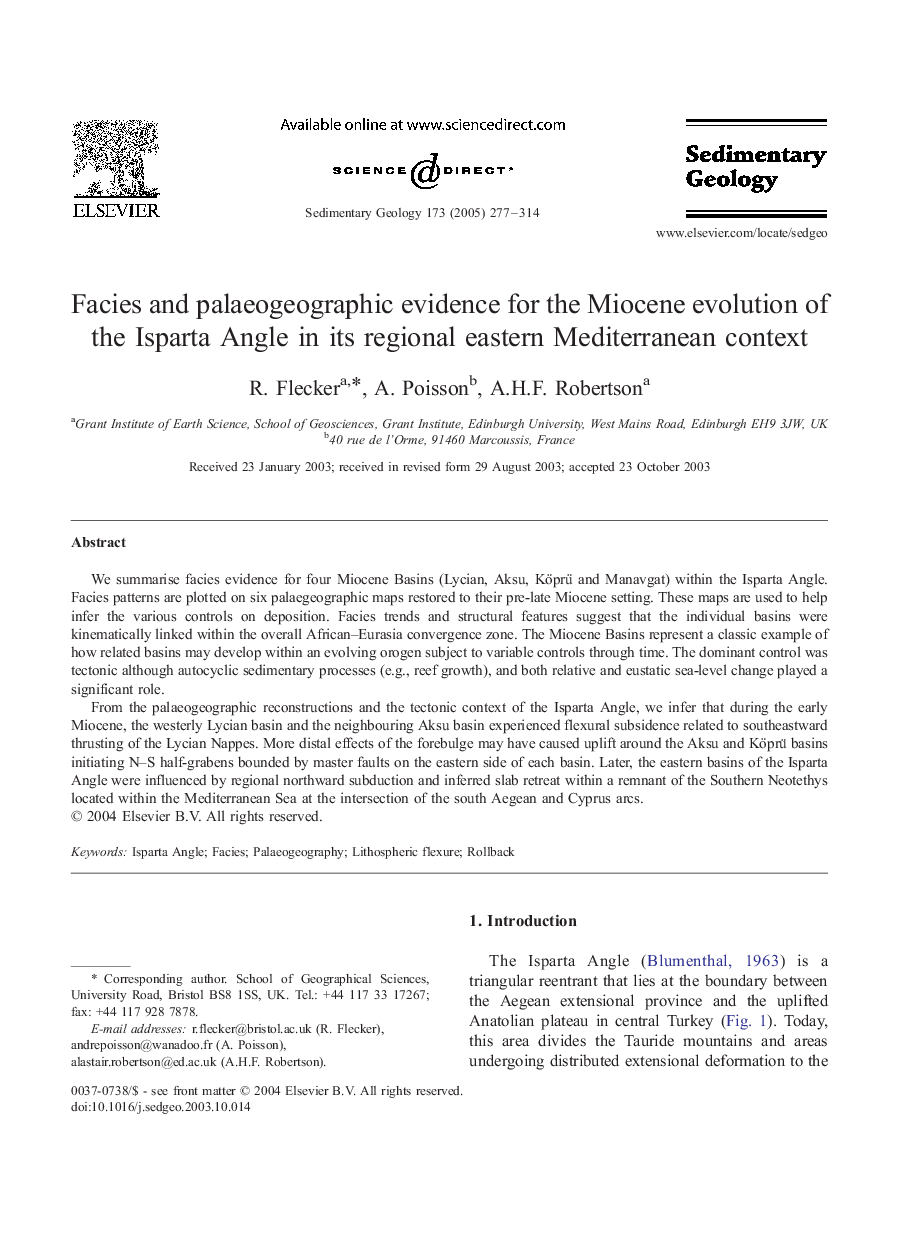| Article ID | Journal | Published Year | Pages | File Type |
|---|---|---|---|---|
| 9526128 | Sedimentary Geology | 2005 | 38 Pages |
Abstract
From the palaeogeographic reconstructions and the tectonic context of the Isparta Angle, we infer that during the early Miocene, the westerly Lycian basin and the neighbouring Aksu basin experienced flexural subsidence related to southeastward thrusting of the Lycian Nappes. More distal effects of the forebulge may have caused uplift around the Aksu and Köprü basins initiating N-S half-grabens bounded by master faults on the eastern side of each basin. Later, the eastern basins of the Isparta Angle were influenced by regional northward subduction and inferred slab retreat within a remnant of the Southern Neotethys located within the Mediterranean Sea at the intersection of the south Aegean and Cyprus arcs.
Related Topics
Physical Sciences and Engineering
Earth and Planetary Sciences
Earth-Surface Processes
Authors
R. Flecker, A. Poisson, A.H.F. Robertson,
